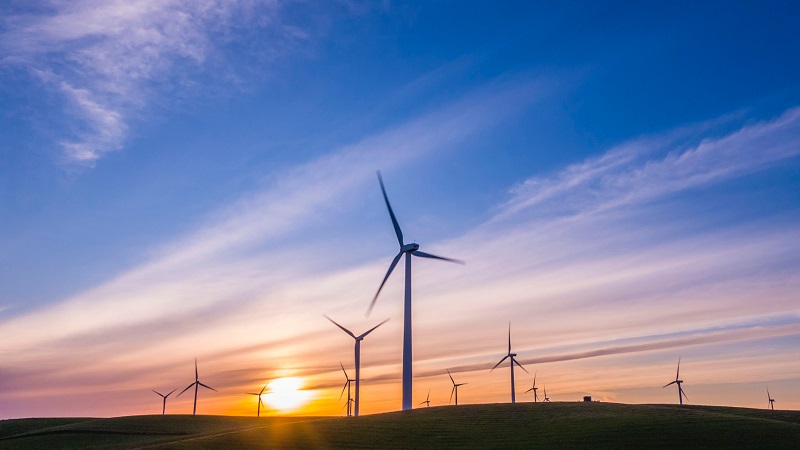200MW wind power plant for Mangwe
A wholly owned Zimbabwean company working on renewable energy projects — Optate Africa intends to set up a 200-megawatt (MW) wind power plant in Mayobodo, Mangwe, in Plumtree and has sought a 25-year lease from Mangwe Rural District Council for 100 hectares of land to set up the plant.
The project to be carried out in partnership with GE, a turbine manufacturing and development company entails the development, financing, construction, testing, commissioning, operation and maintenance of a 200MW wind farm.
The entity seeks to increase Zimbabwe’s generation capacity by exploiting its vast renewable energy potential and aid the country to meet its power demand in the process reduce the dependence on fossil fuel for electricity generation and move to a more balanced and environmentally sustainable energy mix.
Also referred to as wind power, wind energy entails the use of wind turbines to generate electricity that is fed into main grids or to isolated, and off-grid locations with a much smaller impact on the environment compared to fossil fuels.
This is a popular, sustainable, renewable energy source across the world that provides steadier energy and the local energy regulator once hinted at wind resource measurement in the middle veld from south to north-eastern parts of the country.
According to Optate Africa, the project results will be measured by the number of MW installed, the number of residential customers that will benefit from the electricity supplied and greenhouse gas (GHG) emissions avoided on an annual basis.
The entity has expressed its intention to lease 100 hectares of land to set up the plant through a 25-year lease with Mangwe Rural District Council.
“Notice is hereby given in terms of Section 71 of Rural District Council Act (Chapter 29:13) that Mangwe Rural District Council intends to lease an area of 100 hectares to Optate Africa for a period of 25 years for the purpose of setting up a renewable energy project. The project area is in Mangwe district,” reads part of the notice by Mangwe council.
“A fraction of the power generated by the project will be sold to the Zimbabwe Electricity Transmission and Distribution Company (ZETDC) under a 25-year Power Purchase Agreement and the other part supplied to the Southern African Power Pool (Sapp),” the firm said on its website.
It notes that the use of wind power has a light environmental footprint compared to the much more serious effects of conventional electricity generation, which promotes climate change and disturbs the natural balance.
“Wind power does not produce harmful emissions or hazardous waste, it does not deplete natural resources, nor does it cause environmental damage through resource extraction, transport and waste management.
“Wind turbines occupy less than one percent of the land area. Once up and running, existing activities, such as agriculture and ease of access to the site, can continue around them. A wind farm development (facility) is subject to environmental impact assessment, in this case by the Environmental Management Agency (EMA), to ensure that the potential effects on the immediate environment (including flora and fauna) are carefully considered before construction of the facility is allowed,” it added.
It added that a social Impact Assessment was done and permission was granted by community elders in Bulilima.
With the cost of oil and gas expected to stay high for the foreseeable future, countries that can generate their own energy from renewable sources would appear to be in an enviable position.
To diversify its energy mix and reach its 2030 carbon emission reduction objectives, Zimbabwe plans to use power generated from non-fossil sources, highlighting the ongoing development of the energy transition in the mix of power generation.
Experts note that wind energy offers many advantages, which explains why it’s one of the fastest-growing energy sources in the world.
To further expand wind energy’s capabilities and community benefits, researchers are working to address technical and socio-economic challenges in support of a de-carbonised electricity future.
However, wind energy has largely remained untapped and under-utilised in the country.
In 2022, the Government indicated that it had revived plans to integrate wind energy into the country’s energy mix as it continues to devise mechanisms to contain the enduring power deficit and prepare for anticipated growth in demand for power.
This was after the Zimbabwe Energy Regulatory Authority (Zera) in 2018 halted the wind energy feasibility study after companies tendered expensive bids, which exceeded the estimated budget.
The Zimbabwe National Renewable Energy Policy, launched in 2019 set the target of achieving a renewable capacity of 1 100MW or 16,5 percent of overall electricity supply by 2025.
The policy also aims to have installed
250 000 solar geysers, increase the use of the institutional and domestic bio-gas digesters, promote use of solar mini-grids and solar water pumping solutions as well as boost the use of renewable technologies.
To encourage investments into renewables, Zimbabwe is offering incentives including duty and tax exemptions and prescribed asset status to pension and insurance companies.-ebusinessweekly











